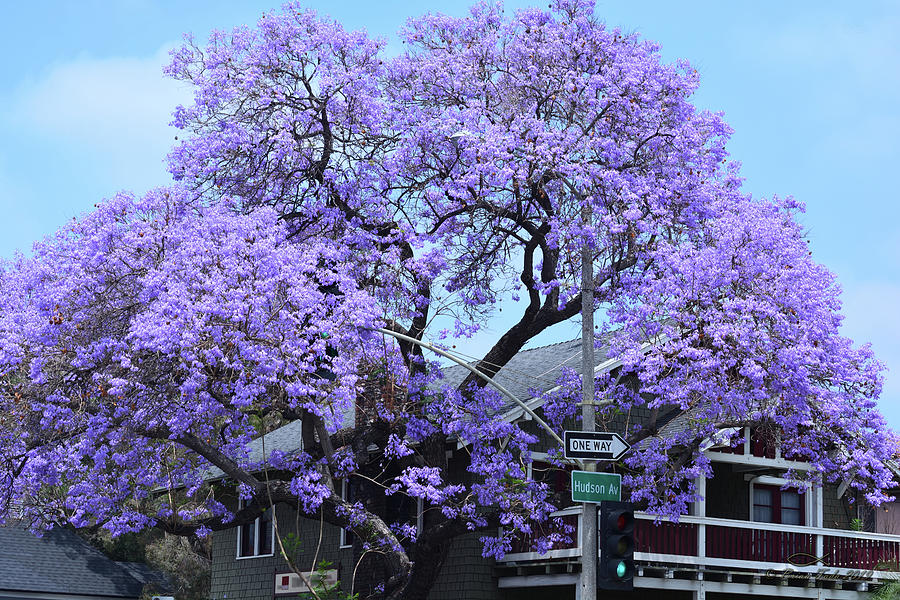
[1]-1920w.jpg)
- JACARANDA TREE NEAR ME HOW TO
- JACARANDA TREE NEAR ME FULL
- JACARANDA TREE NEAR ME PROFESSIONAL
- JACARANDA TREE NEAR ME CRACK
Propagating Jacaranda From A Nursery PlantĪfter acquiring your jacaranda seedling, dig a hole in the garden space you’ve allotted for the tree - somewhere with full sun. Let your tree grow and flower - jacaranda trees can have life spans up to 50 years!.Transplant when seedlings are 8 months old, then maintain well until established.Wait for seeds to sprout - about two to three weeks.

Cover with a thin layer of soil and be sure to keep moist.Soak the seeds in water for a day, then place them on a soil bed in seedling containers or pots.
JACARANDA TREE NEAR ME CRACK
JACARANDA TREE NEAR ME PROFESSIONAL
If you need help prepping your garden beforehand, or placing your seedlings, it’s best to consult a professional gardening service to attain the best conditions to let your jacaranda tree thrive. Do not plant near drains, water lines, swimming pools, and paths - the jacaranda tree root system is very vigorous, but is sensitive to fungi and root rot. The second-most important thing is the tree’s placement. The most important thing to consider about planting a full jacaranda tree is the space. This way, you’ll get the most vibrant flowers. If you want your jacaranda tree to look its blooming best, plant it somewhere it gets full sun - around 6–8 hours of light a day. Waterlogged soil increases its risk of root rot or fungal problems - neither of which anyone wants on their plants. They will tolerate clay or loam soils, but nothing that retains plenty of moisture or could be considered heavy. Jacarandas thrive in well-drained, sandy soil with a slightly acidic pH level. Your jacaranda tree will like heat and humidity, but be careful of scalding or sunburn if the temperature gets too high! In Australia, jacaranda trees are particularly widespread in south-eastern Queensland, but also appear in most other states. They can also grow in temperate climates, so long as you pay close attention during winter. Jacarandas can grow anywhere with a tropical, subtropical, or mild climate, so long as there is no risk of frost. So if you have a compact garden, you can still have jacarandas too! But there is a smaller cultivar called Bonsai Blue that reaches 2.5–3m in height and 2–2.5m wide. The spread of a jacaranda’s branches reaches anywhere between 4.5–9m. mimosifolia are not for small gardens - they can grow up to 20m tall, with the average mature height around 7.5–15m. Also known as a fern tree, black poui, or blue jacaranda, this sub-tropical tree blooms in late spring to early summer with its signature lilac flowers. A jacaranda tree is either semi-evergreen or deciduous, depending on the climate it grows in.

The jacaranda tree (or jacaranda mimosifolia ) has existed in Australia for over 150 years, but it is actually native to South America.
JACARANDA TREE NEAR ME HOW TO
You can view the jacarandas in many places around Australia - and you can even grow one right in your backyard! Here’s a guide for how to grow a jacaranda tree, whether from seed or seedling. October to December is a special time, with the flowering jacaranda trees lining roads. Then back to spring, and another burst of purple covers its branches. Autumn sees a burst of warm colour as the foliage turns, before late winter leaves you with a beautiful silhouette. In late summer, the lush leaves provide cool shade for any person, animal, or plant underneath. Spring to early summer brings a bounty of beautiful lilac blossoms (and hay fever). The jacaranda tree might only bloom once a year, but it’s a stunning tree for all seasons.


 0 kommentar(er)
0 kommentar(er)
